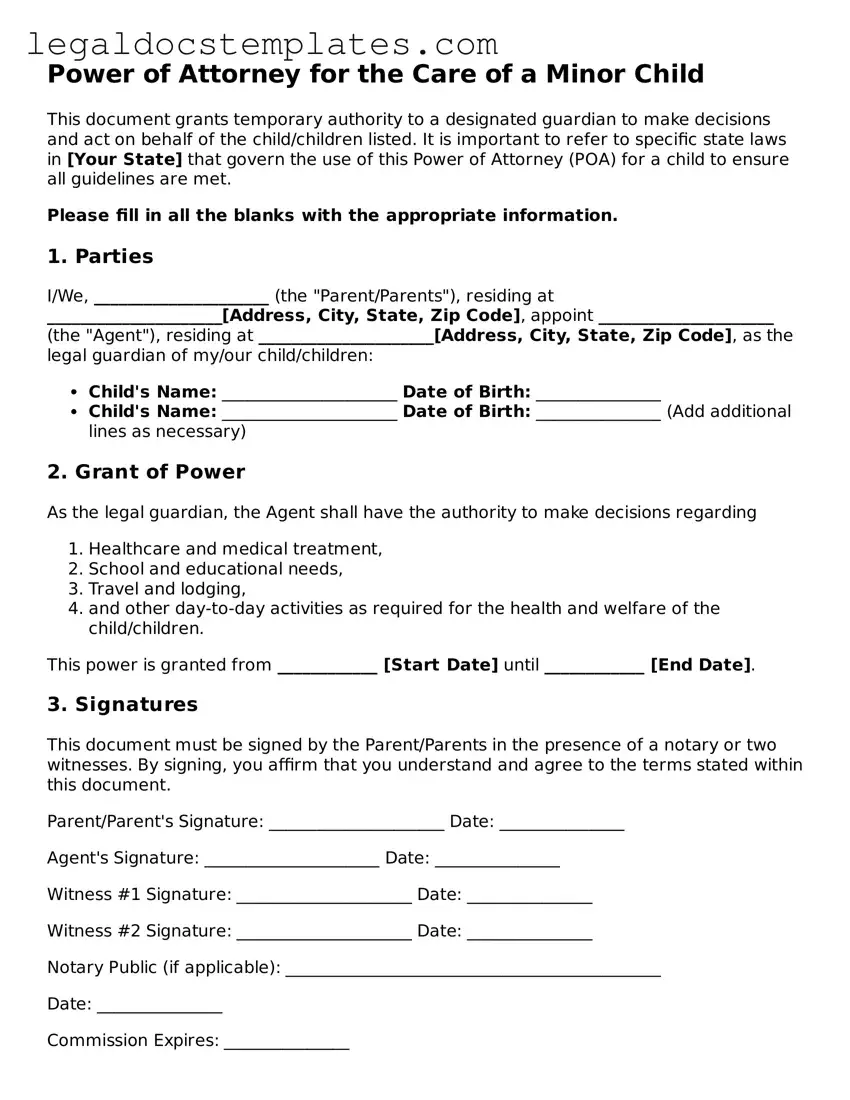Power of Attorney for the Care of a Minor Child
This document grants temporary authority to a designated guardian to make decisions and act on behalf of the child/children listed. It is important to refer to specific state laws in [Your State] that govern the use of this Power of Attorney (POA) for a child to ensure all guidelines are met.
Please fill in all the blanks with the appropriate information.
1. Parties
I/We, _____________________ (the "Parent/Parents"), residing at _____________________[Address, City, State, Zip Code], appoint _____________________ (the "Agent"), residing at _____________________[Address, City, State, Zip Code], as the legal guardian of my/our child/children:
- Child's Name: _____________________ Date of Birth: _______________
- Child's Name: _____________________ Date of Birth: _______________ (Add additional lines as necessary)
2. Grant of Power
As the legal guardian, the Agent shall have the authority to make decisions regarding
- Healthcare and medical treatment,
- School and educational needs,
- Travel and lodging,
- and other day-to-day activities as required for the health and welfare of the child/children.
This power is granted from
____________ [Start Date] until
____________ [End Date].
3. Signatures
This document must be signed by the Parent/Parents in the presence of a notary or two witnesses. By signing, you affirm that you understand and agree to the terms stated within this document.
Parent/Parent's Signature: _____________________ Date: _______________
Agent's Signature: _____________________ Date: _______________
Witness #1 Signature: _____________________ Date: _______________
Witness #2 Signature: _____________________ Date: _______________
Notary Public (if applicable): _____________________________________________
Date: _______________
Commission Expires: _______________
